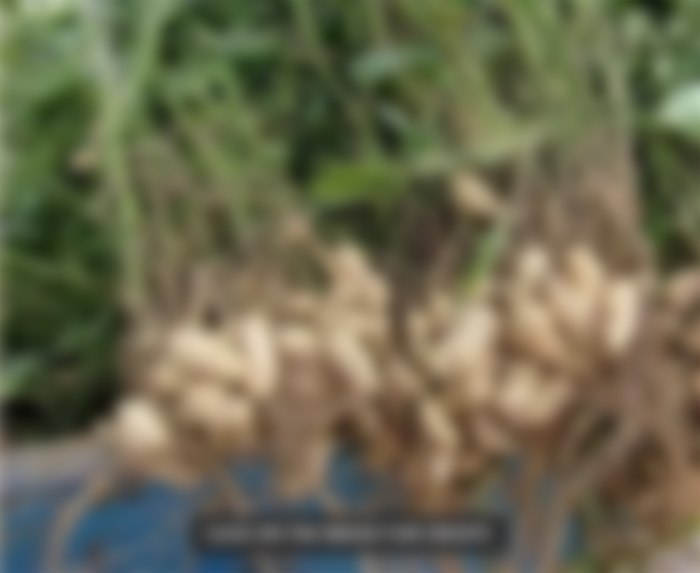Happy day Read.cash Community, wishing you a happy weekend and having a great time. "A promise is a debt", a Venezuelan saying, in one of my articles I wrote about Peanut Cream and the way I process raw peanuts was left pending.
These are my wonderful Sponsors, I invite you to review their articles, they are very good and fascinating, I am sure you will like them.
But as always a little bit of history.
The peanut has been cultivated for more than 8000 years, it is native to South America. The Peruvian aborigines came to use it as currency, as a status symbol and as food. By the 1500's it was transported to Europe, from there it went to Africa and then to Asia, in this way it was distributed throughout the continents.
Among the main countries that cultivate it are China and India, for the extraction of its oil.
Its scientific name is Arachi hypogaea, it is a low growing oleaginous plant, it can reach up to 70 cm high. It has yellow flowers when pollinated and dried contains between 3 and 5 fruits that are buried in the ground.

The peanut is a legume highly rich in antioxidants, with 50 gr of peanuts it provides 24% of the proteins we need. It contains unsaturated fats, being a source of liposoluble vitamins. It also has riboflavin that acts in the process of respiration of the skin cells, nails and hair and vitamin B3 acts in strengthening the muscles.
Peanut Sheller
When I started to prepare peanut cream for sale, I had many problems with prices, every week there was an increase in the price of peanuts, so I had to increase the product, I started processing 1 kg, when I got home I washed the peanuts and left them to dry in the sun, then I shelled them and finally I roasted them and we removed the red shell to make the cream. All this process was done manually, it was 1 or 2 kg, then I increased to 5 kg, but when we reached 10 kg, we spent a lot of time in the process, everyone at home collaborated but we did it in too many hours. From here again Google came to the rescue, I investigated the way of how to peel faster and I found it.
With leftover wood I made our manual husker, first I made 2 wheels for the inner part, I was gluing strips of about 10 cm long to close the circle, these circles with holes to pass the shaft to be fixed, then I lined it with a rubber from a tire, then I screwed other strips that made as a species of nails. The axle I made it with a ½" bar, lined with pvc tube, very simple.

For the bottom part where the shelled peanuts come out I couldn't find what to do, I tried to put some kind of a grate with two wooden slats, it might work if you leave just enough space for the shelled peanuts to pass through, but it seemed like a lot of work and I didn't have all the necessary tools. At that time I was doing a project of laying hens for a friend, in an opportunity that I visited him my face lit up when I saw the remains of a front grill of a vehicle, that he gave me, for him that was garbage so I was cleaning the site, hehe. When I got home the first thing I did was to measure the grooves and they were perfect, with that I finished the manual peanut sheller.

From this moment on, diversification began, we roasted peanuts in shell and shelled peanuts, I am going to reveal my secret that I had deeply guarded.
First, I selected the largest peanuts in shell, those were to be sold, roasted in shell, in 13 g, 50 g, 100 g and 500 g presentation.
Second, after roasting and removing the red skin, we selected the largest whole kernels, to sell them roasted without shell in the same presentations.
Third, the remaining peanuts were to prepare the peanut cream, we had only a presentation of 200 g. We were about to make another smaller presentation of about 20 g but we did not succeed.
Almost all sales were by order, although I took some to the office and they were sold there first thing in the morning, my wife took them to her school and had a good sale.

To remove the red skin of the peanut we continued doing it by hand, I got a perforated cylinder that I thought to use in the oven roaster, as it was turning it would possibly be releasing that skin, that cylinder is from the exhaust pipes of the trucks, I was transforming it and it fits perfectly in the oven.
I continued buying peanuts in the municipal market, although my work in the institution I had to visit agricultural producers, several times I spoke with some producers who had planted peanuts, they gave me the date for when they were going to harvest, I had everything resolved when the date arrived I visited them to buy the product, but what do you think, they were selling it to me at the same market price, I returned annoyed because they were not paying transportation, they only had to take the bags to the vehicle not to the market, I was buying part of the harvest, but they wanted to sell me all of it. So I told them to take it to the market and there I would buy it at the same price, the intention was to maintain the price of peanut butter by buying at a lower cost, but under those conditions it was not possible. There came a time when it was unsustainable, the product became very expensive and I was losing customers, until we stopped producing.
Sometimes they ask me, if they are interested, I make them but I sell them at cost, generally it is to process 1 kg of peanuts, how much can you earn?
With this article I complete what was left pending, thanks to @TheTopFive who liked the previous article and waiting for this one. You can also participate in #SweetWeek from @ArteFM.
I thank my beautiful sponsor @Eylz2021 for their renewal and continued trust.

All content is original
The information obtained from the Web is indicated
The photos were taken by me
Thanks for visiting me, you can leave a comment and remember to Like and Follow me.
November 20, 2021

REFERENCES:
Photo Cover: https://enterate24.com/conoce-los-beneficios-que-otorga-el-mani-al-organismo/
Photo Cover: https://www.arquitecturapura.com/que-es-la-carpinteria/
https://www.bbc.com/mundo/noticias-53654004
https://inversionesagromani.com/conoces-la-historia-del-mani/
https://www.ecoagricultor.com/cultivar-cacahuates-mani-huerto-macetas/






How interesting Frank, and it's a pity that the product was so expensive that you had to stop producing it. I'm sure here in Caracas would be a market for it.